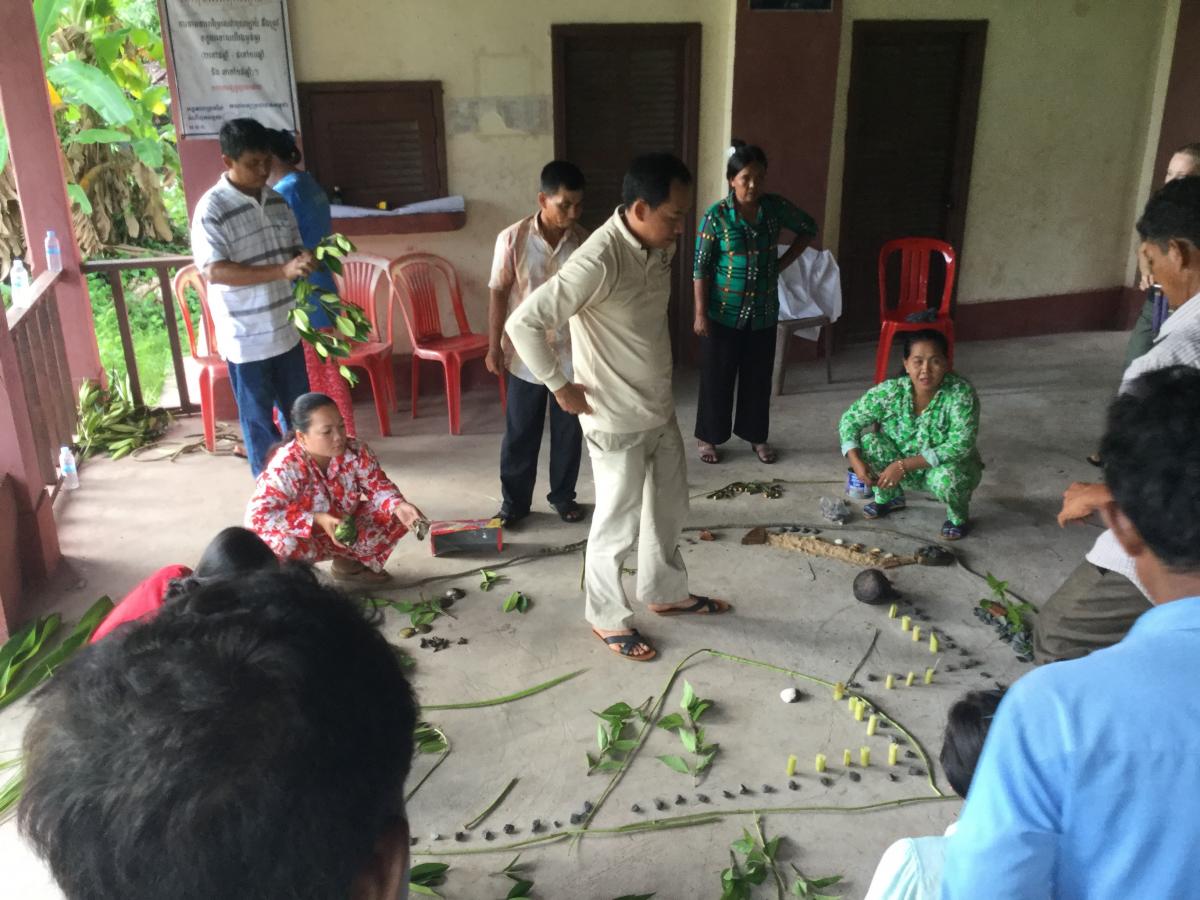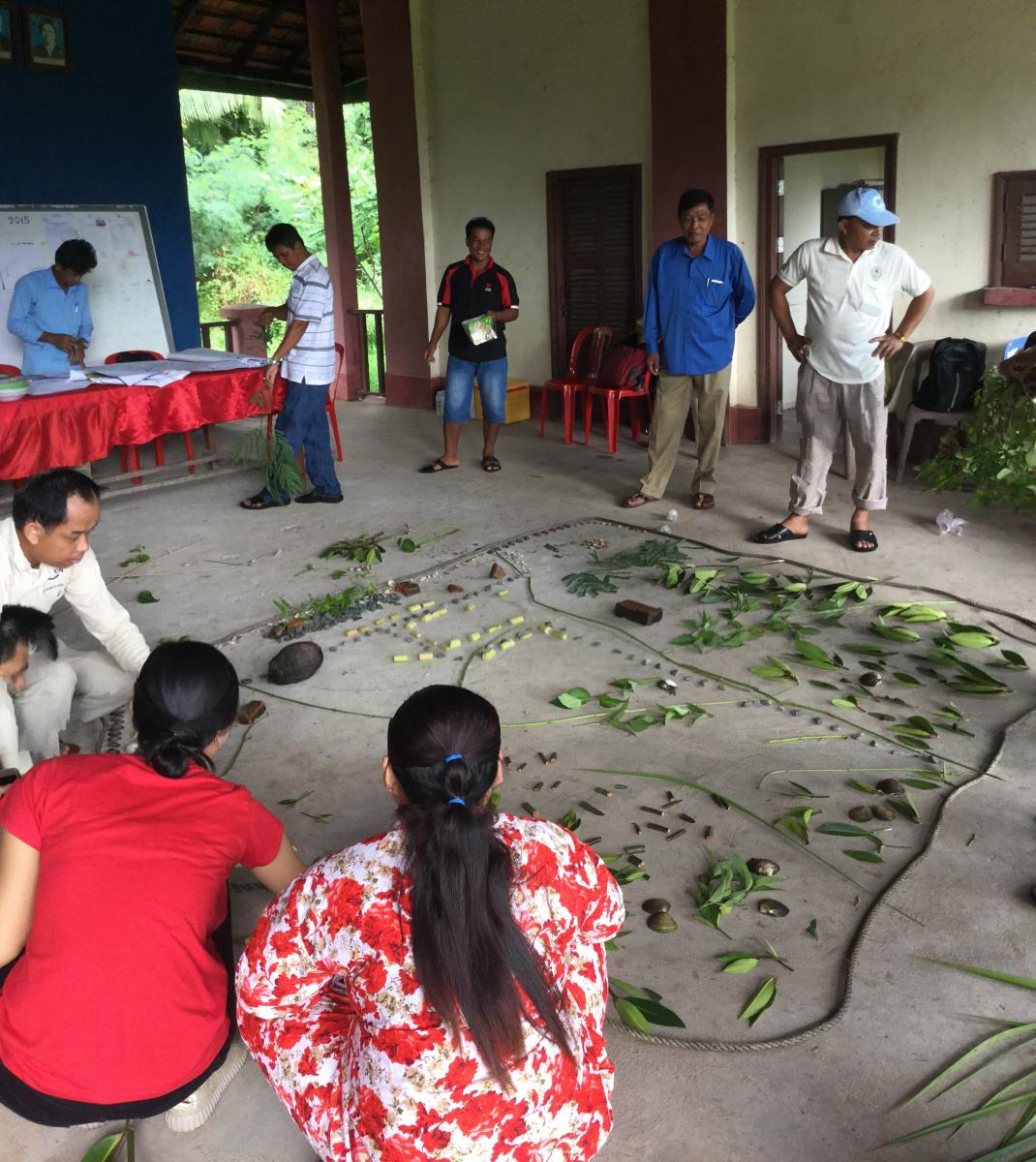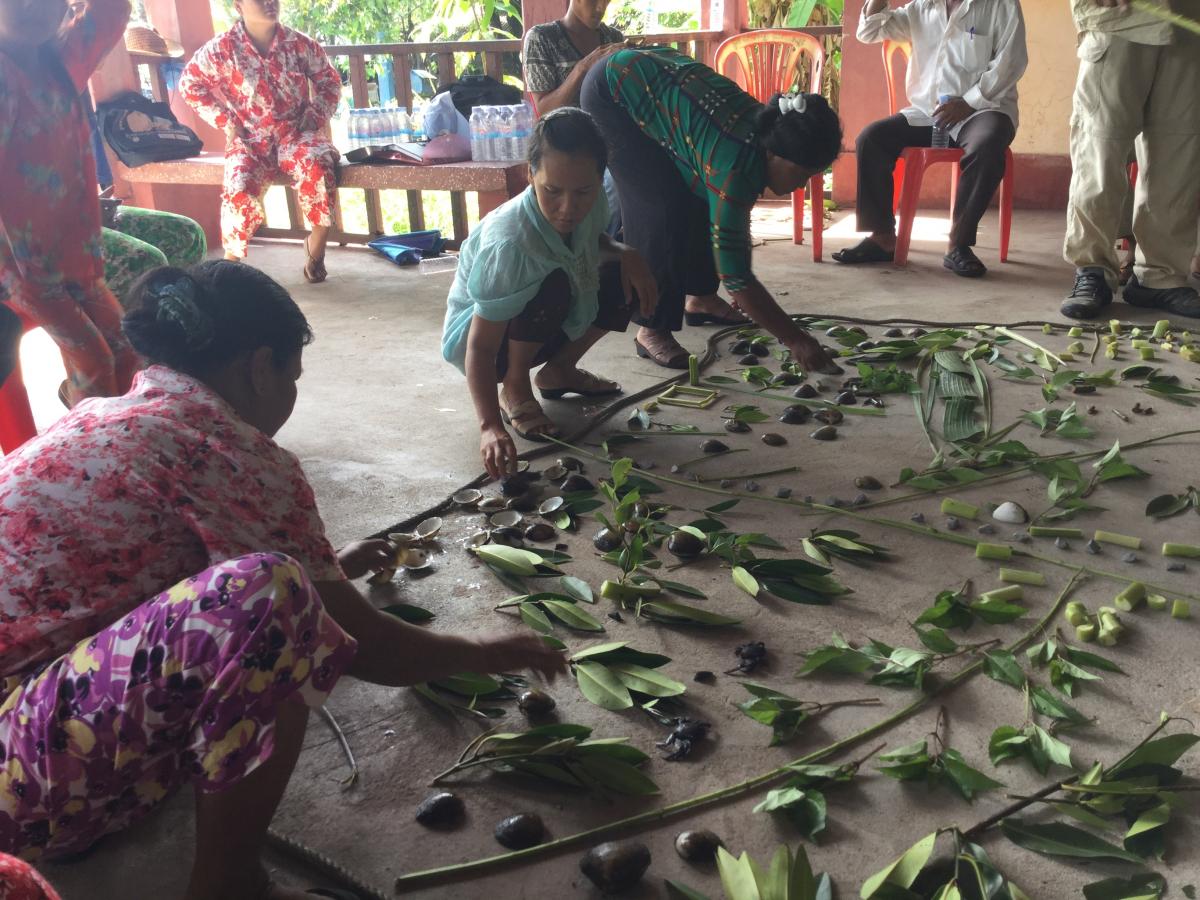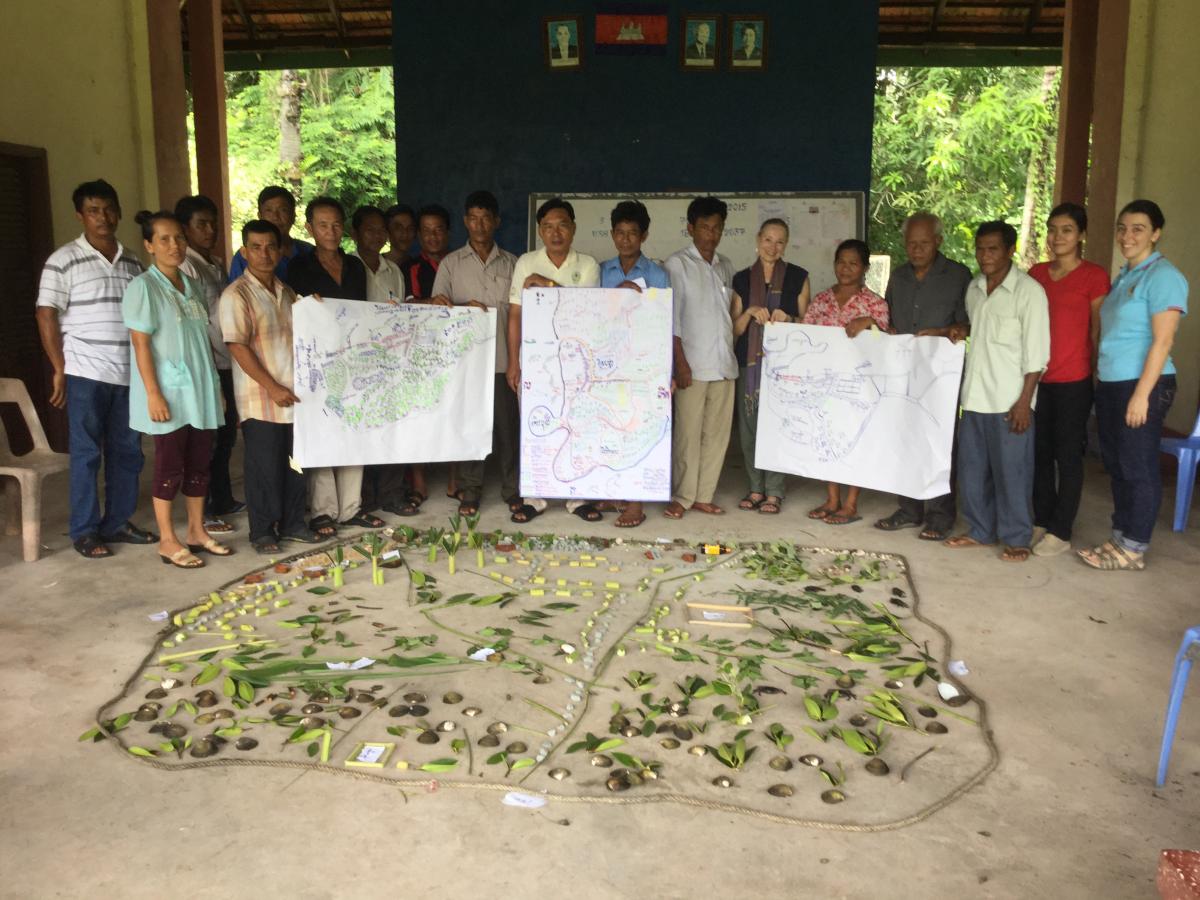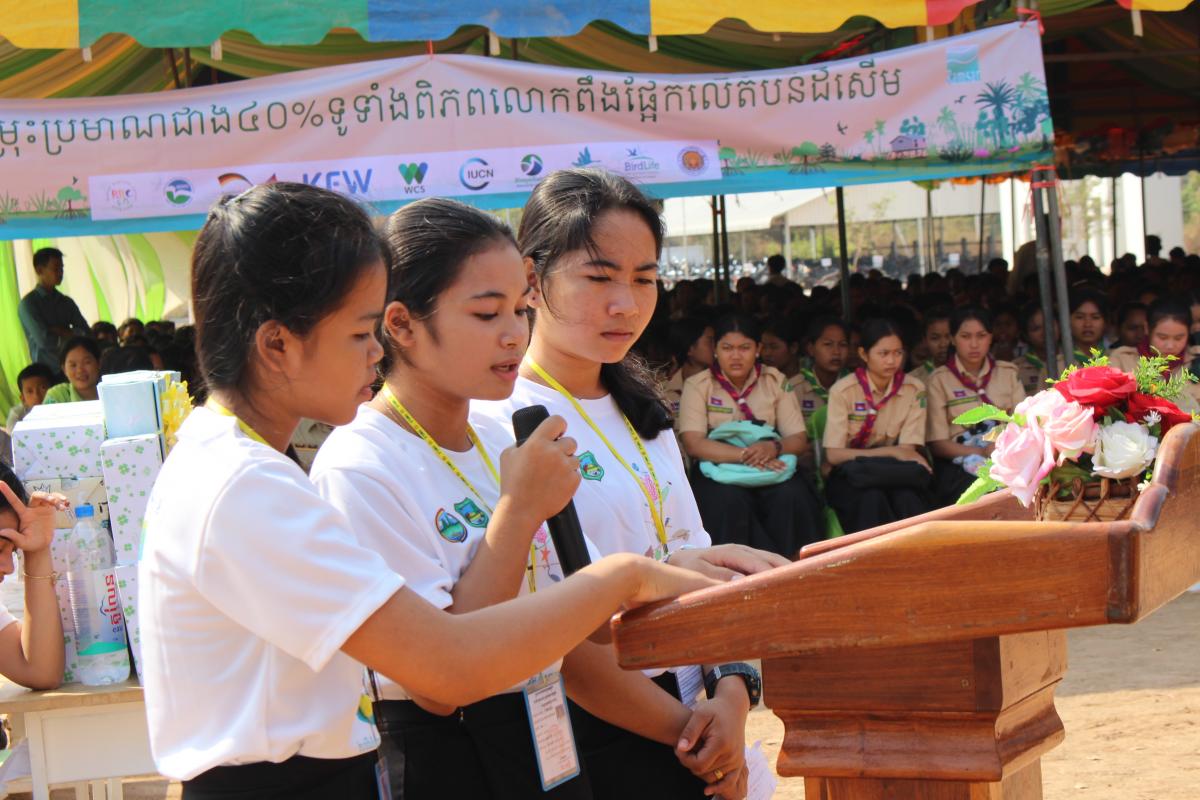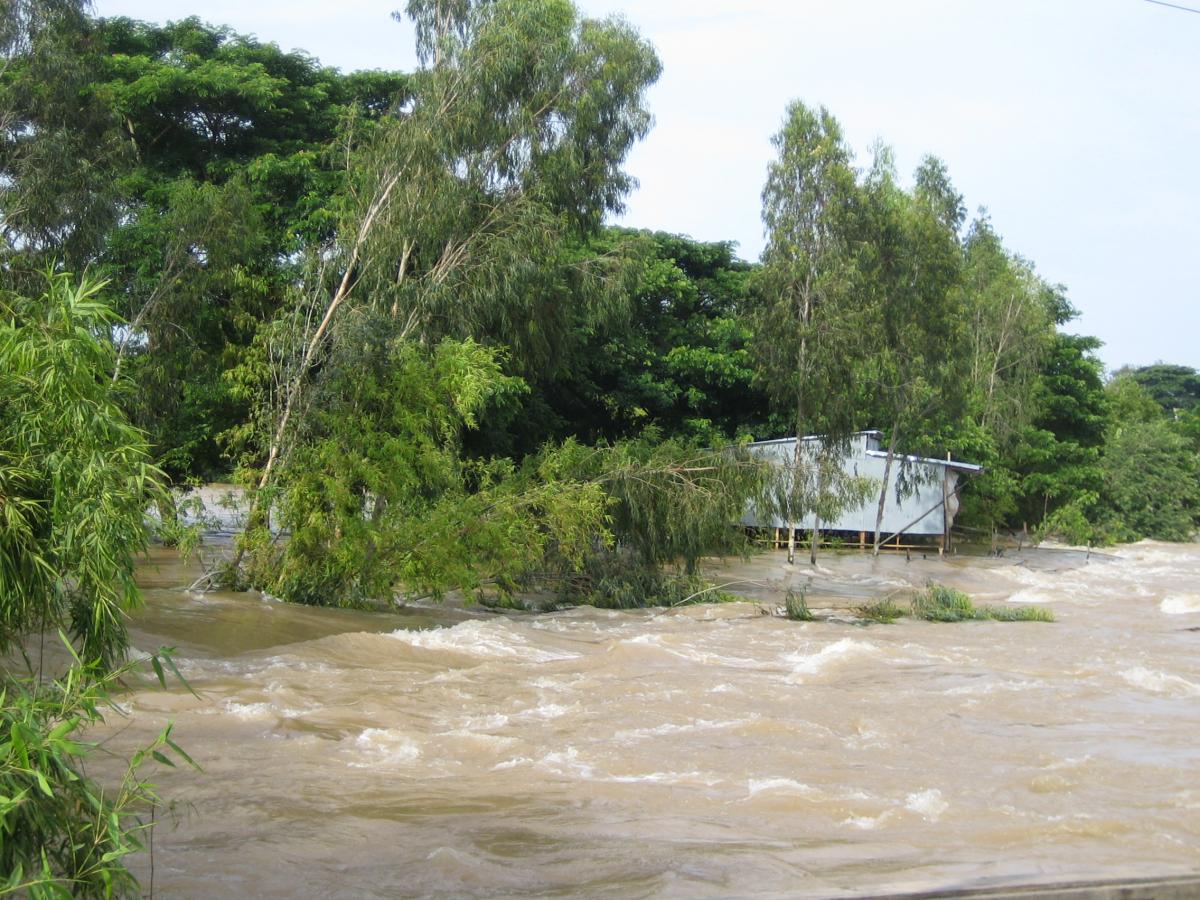Blog: Connecting to people connected to nature
I pulled my phone out of my pocket to find a new message: I was out of service and increased data charges would apply. For the next six days, contact with the outside world would be limited to late evenings in the guest house: freedom.
Freedom to be present and to engage with a remote fishing village accessible by over an hour’s motorboat ride through the winding canals of recently-restored mangrove forest in Koh Kong Province, Cambodia. The four-person Cambodian team reminded us that rainfall common for late April would affect the waterways, potentially making it dangerous to travel on the open sea. We buttoned our ponchos, hopped in the eight-seater boat and began the journey through the labyrinth of mangrove waterways.
Arriving at the village built partially on stilts, we walked by thousands of shrimps drying in the sun and up a small dirt path to the meeting area. We introduced ourselves and the mission and learned about the villagers through interviews and group activities.
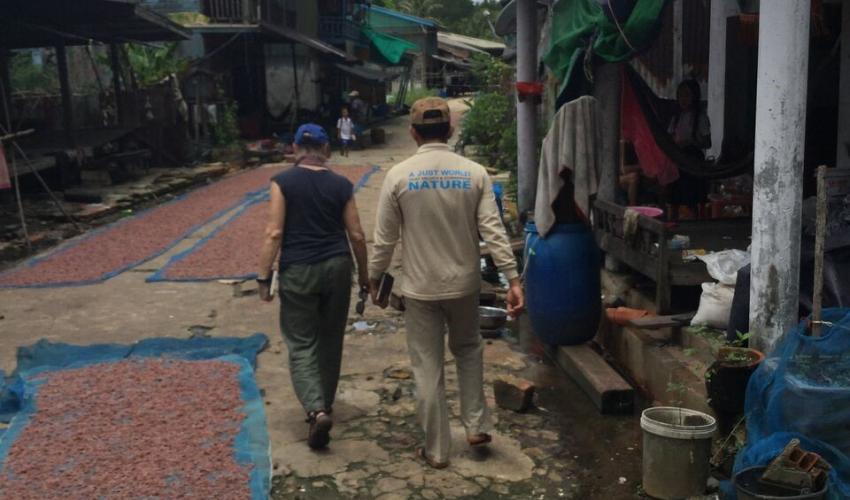 Photo: © IUCN / Ariel Stenger
Photo: © IUCN / Ariel Stenger
The main activity began when Sonim Veth, IUCN's field coordinator in Koh Kong, directed villagers to create a local map on the floor by plotting resources, homes, schools, temples and any other areas of note. Within a few minutes the 21 villagers of all ages were busy collecting palm leaves, banana leaves, small stones, sand, pebbles, living mangrove snails, green mussels, mud crabs and green bamboo rods into small piles. We were watching an organic map spring to life.
Like the flow of a stream, adapting to the rocks and curves of the riverbed, villagers worked seamlessly using these natural materials to recreate the village of Koh Kapik — their home, and all the resources it holds. Children ran to collect more banana leaves from the grove they know so well, before hustling back to the open-air meeting hall tucked under a large canopy of banyan trees. The village leader oversaw the handful of fisherman recreating the footpaths and canals using bamboo rods. The women who collect mangrove snails and green mussels placed living specimens in the parts of the map designated as mangrove forests.
The natural resources used in the activity reinforced the interconnectedness of a village with less than 70 households who make an estimated US $120 per month. They spoke with pride about their diverse, often symbiotic relationship with the various organic products found in their village. It was an inclusive and engaging map presentation unlike anything I had ever witnessed, highlighting strengths rather than weaknesses by allowing the villagers to focus on what they had rather than what they lacked.
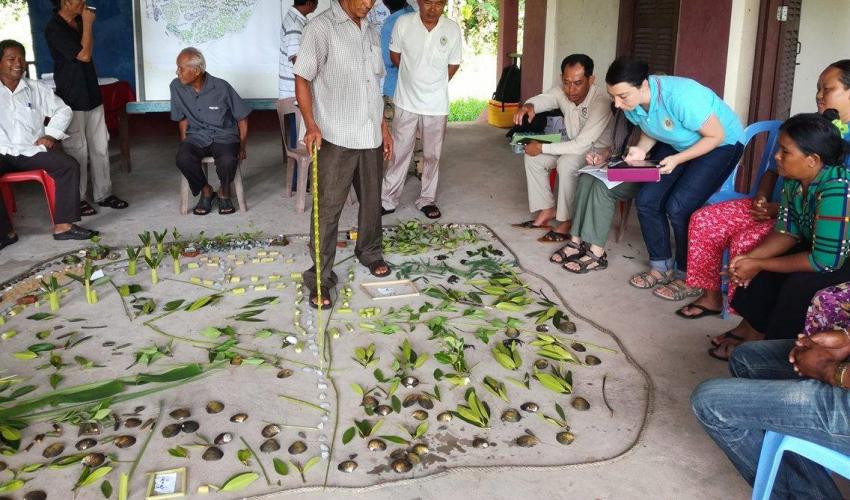 Photo: © IUCN / Ariel Stenger
Photo: © IUCN / Ariel Stenger
This incredible community mapping activity was just one piece of IUCN’s mission to Cambodia as part of the Environmental and Social Management System (ESMS) consultation. I was lucky enough to contribute and observe under the guidance of Dr. Heather Peters, an anthropologist with over 20 years of field experience in Asia alone. ESMS focuses on assessing the cultural and environmental impacts that a project may inadvertently impose on the community before the project begins and on monitoring these impacts during project implementation. It also gives the communities a voice from the start of the project process.
These consultations were part of the project design process for a Global Environment Facility-funded project to manage the peatlands in Cambodia, Lao PDR and Myanmar over the next four years. The goal of the ‘Sustainable Management of Peatland Ecosystems in Mekong Countries’ project is to manage peatland ecosystems sustainably in targeted countries, conserve biodiversity and reduce greenhouse gas emissions. It is clear after such an insightful mapping experience that learning and knowledge exchange at all levels will be integral to supporting the villagers and local peatlands biodiversity.
Back in Bangkok, I take the sky train to the office and smile to myself as I remember the resourceful, friendly community that shared authentic learning moments via natural resource based communication. I think twice before opting for the cell phone-dependent and impersonal life in the big city. The ESMS mapping experience in Koh Kong helps me appreciate the ways in which people can connect to nature with a bit of inspiration, resourcefulness and teamwork.
This blog post was written by Ariel Stenger for World Environment Day 2017: 'Connecting People to Nature.' Ariel is an intern for IUCN Asia's Natural Resources Management group. Her primary focus is the 'Sustainable Management of Peatland Ecosystems in Mekong Countries' project.
